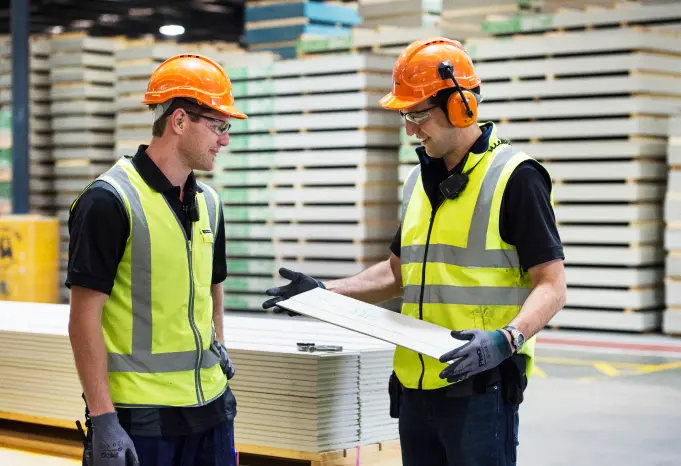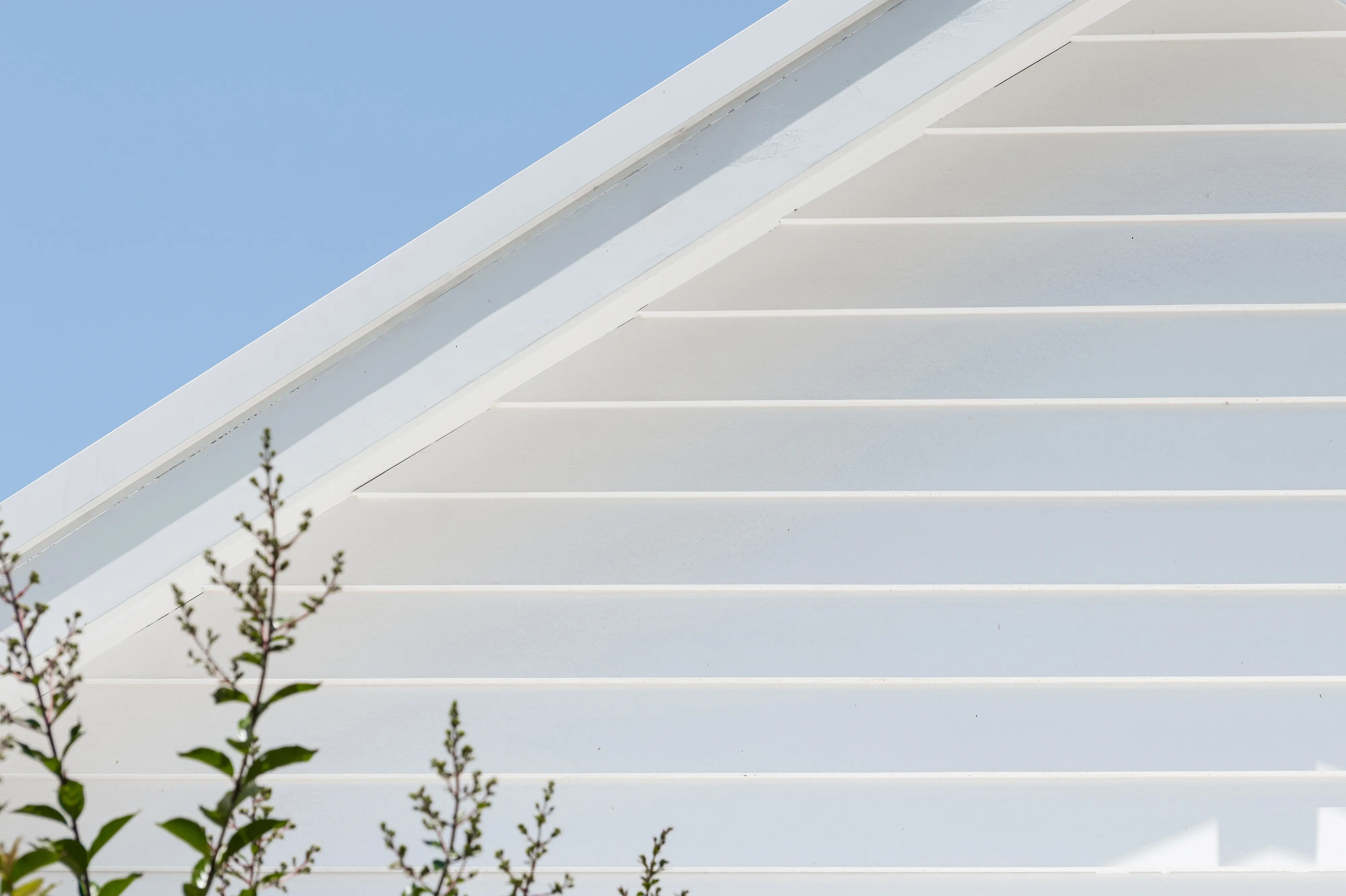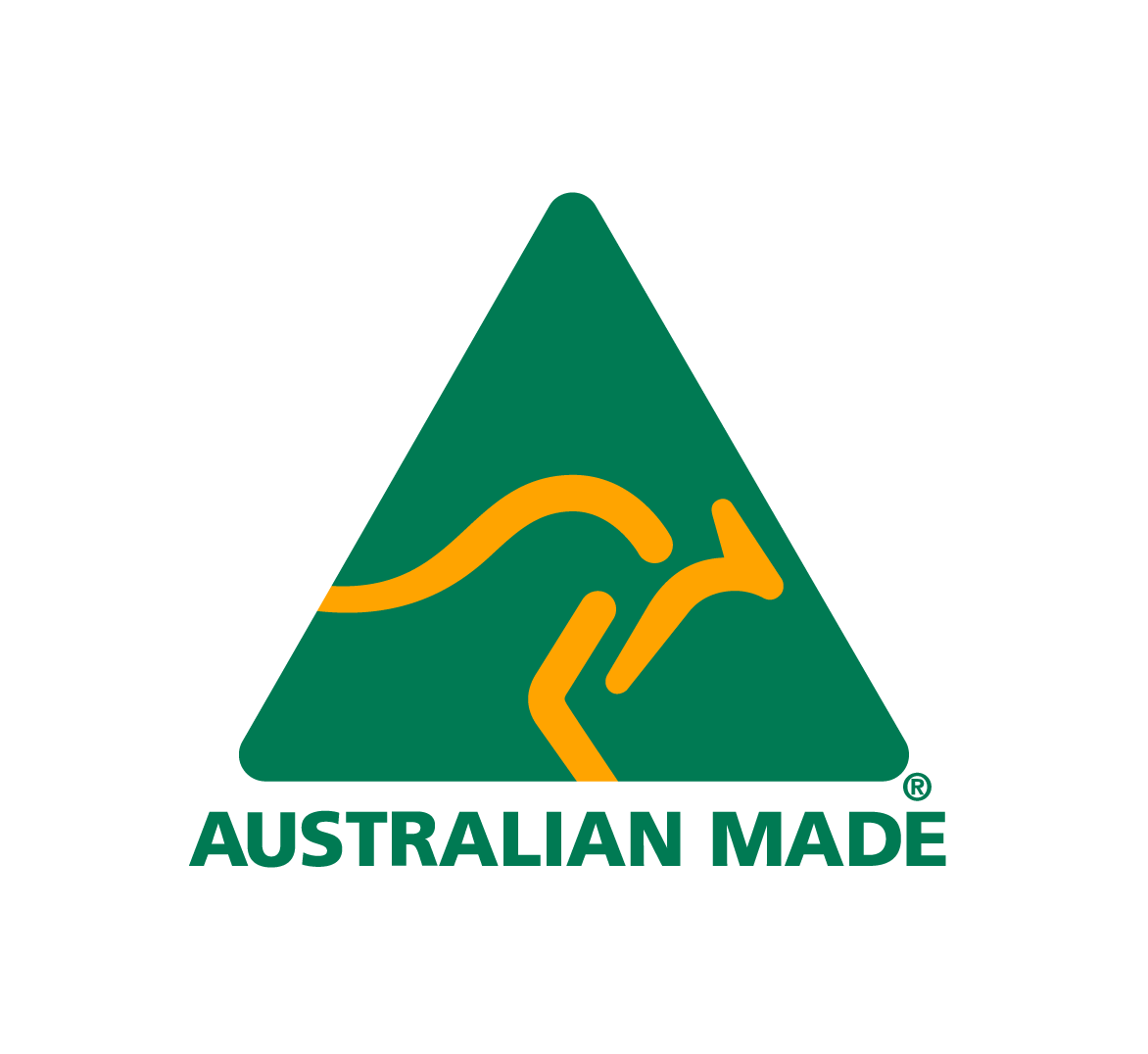Let’s talk about what Hardie™ fibre cement is, and what it means for your build.
Hardie™ engineered fibre cement is made from a mixture of cement, sand, cellulose fibre, water and proprietary additives.
This unique formulation has created beautiful and durable exterior cladding solutions for over 100 years.

Design Versatility

Durable

Fire Resistance

Resistant to Moisture Damage
Resistant to Termite Damage

Flexible Colour

Low Maintenance

The key benefits of Hardie™ fibre cement products are:
Design Versatility
James Hardie’s range of fibre cement cladding provide contemporary clean lines and pared-back aesthetics for homes with simple, bold forms.
Durable
Engineered to endure. Hardie™ fibre cement is fire resistant and resistant to damage from moisture and termites.

Fire Resistance
Hardie™ fibre cement will not contribute to the spread of fire.
Resistant to Moisture Damage
Hardie™ fibre cement is resistant to rot and moisture damage. It will also resist warping, swelling and movement.
Resistant to Termite Damage
Hardie™ fibre cement stands up to termite attack.

Flexible Colour
James Hardie’s range of fibre cement exterior products and interior linings are pre-sealed or pre-primed and ready to paint in any colour.
Low Maintenance
Hardie™ fibre cement is easy to clean and holds on to paint well.
Fibre Reinforced Cement (FRC), or simply fibre cement, is a popular building material developed by James Hardie in the early 1980s. It pioneers the use of alternative reinforcing materials to create building products.
Australian-made Hardie™ Fibre Cement is made from a mixture of:
Cement
Sand
Water
Cellulose fibre
Small amounts of other chemical additives are used to enhance the process and provide the products with specific characteristics. This unique formulation helps to create beautiful and durable exterior cladding solutions.
Quality Assurance and Standards
You can rely on the quality of James Hardie brand products and solutions. All our Australian-manufactured fibre cement products meet ISO 9001:2015 quality assurance standards, ensuring:
Adherence to our Quality Policy
Continual improvement of our Quality Management System
Servicing customer needs and expectations
Providing reliable quality products
Continual improvement of product and service quality
Our factories manufacture fibre cement to meet the Australian standard AS/NZS 2908.2:2000 for cellulose-cement products (flat sheet), ensuring they meet the characteristic requirements and methods of test, control and acceptance conditions.
Built for tough Australian conditions and ready for what life throws at it, Hardie™ fibre cement is resistant to fire and rot, and resistant to damage from moisture and termites. Products are easy to install, low maintenance, and help to facilitate versatile design, delivering modern facades that you are proud to come home to.
Hardie™ fibre cement also helps to save time, cost and complexity in the building process. It comes pre-primed and can be ready to paint on the same day as installation (once any additional sealants have cured). It is easy to install and move around the site, and there is no need for specialist trades, reducing complexity and trades onsite. Products are available in a range of sizes to fit common wall frames, helping to reduce wastage and cutting on-site, saving time and costs.
James Hardie has provided Australian made building products to the market for over 100 years. By making our fibre cement in Australia, we proudly support and grow local manufacturing capability, help create jobs, strengthen local industries and bolster surrounding communities.
Yes, James Hardie’s range of fibre cement exterior products and interior linings are pre-sealed or pre-primed and ready to paint in any colour.
Hardie™ fibre cement is resistant to rot and moisture damage. It will also resist warping, swelling and movement.
Yes, Hardie™ fibre cement is resistant to termite damage.
Non-Combustible
Hardie™ fibre cement is deemed non-combustible according to the National Construction Code. It is suitable for use in cladding applications where non-combustible materials are required, such as type A and B building classes.
Bushfire Zones
All Hardie™ Architectural Collection products are suitable for use in bushfire zones up to BAL40, except for Matrix™ Cladding, which is suitable up to BAL29.
Fire Resistance Level (FRL)
When used as part of the Hardie™ Smart Fire & Acoustic Boundary Wall System, Hardie™ Architectural Collection products can be used in bushfire zones up to the highest bushfire attack level, BALFZ. These systems achieve a fire resistance level (FRL) of 60 minutes.
James Hardie manufactures the largest and most versatile range of fibre cement products in Australia. These products are extensively used in the construction of new homes, renovations, restorations and commercial buildings. Here’s where you can use fibre cement in your home:
Applications
External Cladding: Ideal for withstanding harsh Australian conditions, providing durable and attractive exterior finishes.
Internal Lining: Suitable for wet areas like kitchens, bathrooms and laundries due to its moisture damage resistance.
Wall Systems: Provides structural integrity and durability for both external and internal walls.
Flooring: Offers a strong and stable substrate for various floor finishes.
Key Products
Villaboard™ Lining: A durable wall lining that maintains its structural integrity even when exposed to moisture, making it perfect for wet areas.
Secura™ Flooring: A heavy-duty yet lightweight structural flooring substrate. It’s versatile for use with tile, vinyl and carpet finishes over timber or steel floor joists, suitable for both general interiors and wet areas.
Safety Commitment
At James Hardie, we believe that safety is paramount. We are committed to ensuring the safe use of our products.
Understanding the Risks
Intact fibre cement products are not expected to cause adverse toxic effects. The health hazard associated with fibre cement arises from the respirable crystalline silica present in dust generated by activities such as cutting, rebating, drilling, routing, sawing, crushing, or otherwise abrading fibre cement, and when cleaning up, disposing of or moving dust
Safe Work Practices
To minimise dust exposure, follow these best practices:
Follow Instructions: Adhere to James Hardie’s guidelines for safe handling.
Dust Control: Use tools and techniques that limit dust release
Area Warning: Warn others in the area about the dust hazard.
Personnel Rotation: Rotate personnel performing dust-generating tasks to limit exposure
Use of Respirators: If using a dust respirator, at a minimum, use an AS/NZS1716 P2 filter. Refer to the Australian/New Zealand Standard 1715:2009 for detailed guidance on the selection, use and maintenance of respiratory protective equipment.
Additional Resources
For more detailed information, refer to our Best Practice Guide.
For detailed installation instructions for each product, refer to the James Hardie Technical Library.
The maintenance requirements for fibre cement depend on the geographical location and exposure of the building. Here are some basic maintenance tasks to keep your fibre cement in good condition:
Washing Down Exterior Surfaces: Wash down exterior surfaces every 6-12 months.*
Inspect Fasteners: Periodically check that fasteners are adequately securing the sheets to the framing.
Reapply Protective Finishes: Regularly reapply exterior protective finishes.*
Maintain the Exterior Envelope: Ensure joints, penetrations, flashings and sealants are intact to prevent moisture entry beyond the exterior cladding.
Clean Gutters and Pipes: Regularly clean out gutters, blocked pipes and overflows as needed.
Prune Vegetation: Trim back vegetation that is close to or touching the building.
*Refer to your paint manufacturer for specific washing down and recoating requirements related to paint performance.
Asbestos-Free Since 1985:
James Hardie pioneered the manufacture of the world’s first asbestos-free fibre cement products in 1981.
Transition Timeline:
1985: Ceased using asbestos in building products.
1987: Ceased using asbestos in pipes business
Ongoing Commitment:
Since 1987, all James Hardie brand products and solutions have been and continue to be asbestos-free. Learn more about our management of asbestos here.
